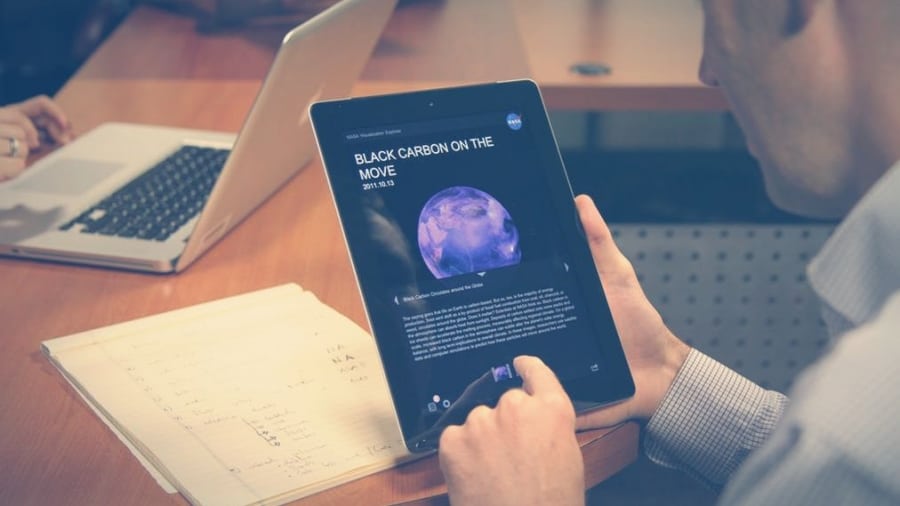Blended learning – a useful combination of learning digitally and analogically
The right mixture makes the difference
Maybe you remember it from your own past – the teacher is holding a detailed monologue in front of the class while the first student doesn’t listen anymore, the second doesn’t understand a word and the third is already one step ahead. If your teacher had adopted the method of Blended Learning he would still have the first student’s attention by using small, relevant learning nuggets. Student number 2 would have found all incomprehensible terms quickly via useful keywording. And student number 3 would be working and exercising on his individual learning path. The teacher in front would turn into an accompanying coach who assists in learning, motivates the group, encourages interaction within the group and actively supports practical applications. Of course, this situation is shown a bit exaggerated. But it puts the benefits of Blended Learning straight to the point.
Individual learning paths
How does this work? And what exactly is Blended Learning? The meaning of the word “blended” already indicates a “mixture”. An appropriate and useful mix means not only to learn digitally and virtually but additionally in live and in presence. It means self-determined learning but not left alone and in constant contact with coach and peer group. The underlying theory of learning of moderate constructivism assumes that best learning results incur by following your own interests and individual requirements – with a coach constantly by your side who accompanies your self-determined learning. “Moderate” constructivism (i.e. Roche, Jörg 2008 – Handbuch Mediendidaktik) is a development of the constructivist learning theory. While the learner is running into the risk of being overwhelmed by only self-directed learning and might get lost on his learning path, the moderate version ensures that support and suggestions are given and includes the attendance of the coach. Digital self-learning tools are hip – if used correctly they are certainly useful for some particular learning goals. But studies have repeatedly shown that the motivation may weaken quickly while sitting alone in front of the computer or swiping on the smartphone. The motivational involvement in a group, which meets live and at fixed times, helps to get on with the goal and to pursue on a long-term basis. Pure knowledge, as well as individual strengths and weaknesses, can be well identified digitally: Adaptive systems analyze the individual learning needs and assimilate accordingly. Simulations can be very close to reality. But the best ‘skill’ training takes place in situations when practice comes as close as possible to reality. This includes an authentic setting in an authentic situation of where I want to apply my skills in reality afterwards. This also is the idea of the “70-20-10” rule – usually 70 percent of skills emerge from practical experience on the job, 20 percent from interactions with others and only 10 percent from formal learning situations.
Explanation of the 70-20-10 rule
Development of individual learning modules/paths
To transfer blended learning into your work life the following applies: The learning content results out of the employees’ competence profile. This content is individually matched with learning modules/paths. To grab and keep the attention and to ensure the optimum use during day-to-day-business, the modules/paths contain small learning units. The so-called learning nuggets include a short video with short questions for example. All learning modules/paths embed constant exchange possibilities with the coach and peer group, live workshops and practical projects.
The best of two worlds
Blended learning thus combines the best of two worlds which are not mutually exclusive, but rather complement each other didactically combined: the world of e-learning and the world of presence learning. It’s like the perfect “blend” of a latte macchiato: The foam of milk should not be missed but the espresso is a definite must for the freshness.



